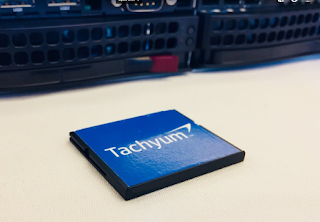NTT successfully demonstrated the first use of Orbital Angular Momentum (OAM) multiplexing to achieve 100 Gbps wireless transmission.
The laboratory tests combined OAM multiplexing with Multiple-Input Multiple-Output (MIMO) technology and carried the signals a distance of 10m.
 NTT said a key feature of OAM is that electromagnetic waves can be superposed and separated because phase rotation occurs on the vertical plane in the propagation direction. An electromagnetic wave with phase rotation cannot be received without a receiver having the same number of phase rotations at the time of transmission. NTT developed a transceiver operating in the 28 GHz band capable of OAM transmission. NTT also developed signal processing technology capable of handling 11 data signals simultaneously each at a bit rate of 7.2 to 10.8 Gbps, thereby achieving large-capacity wireless transmission at a total bit rate of 100 Gbps.
NTT said a key feature of OAM is that electromagnetic waves can be superposed and separated because phase rotation occurs on the vertical plane in the propagation direction. An electromagnetic wave with phase rotation cannot be received without a receiver having the same number of phase rotations at the time of transmission. NTT developed a transceiver operating in the 28 GHz band capable of OAM transmission. NTT also developed signal processing technology capable of handling 11 data signals simultaneously each at a bit rate of 7.2 to 10.8 Gbps, thereby achieving large-capacity wireless transmission at a total bit rate of 100 Gbps.
NTT believes the technology holds promise for achieving large-capacity wireless transmission at a level about 100 times that of LTE and Wi-Fi and about 5 times that of 5G.
http://www.ntt.co.jp/news2018/1805e/180515a.html
The laboratory tests combined OAM multiplexing with Multiple-Input Multiple-Output (MIMO) technology and carried the signals a distance of 10m.
 NTT said a key feature of OAM is that electromagnetic waves can be superposed and separated because phase rotation occurs on the vertical plane in the propagation direction. An electromagnetic wave with phase rotation cannot be received without a receiver having the same number of phase rotations at the time of transmission. NTT developed a transceiver operating in the 28 GHz band capable of OAM transmission. NTT also developed signal processing technology capable of handling 11 data signals simultaneously each at a bit rate of 7.2 to 10.8 Gbps, thereby achieving large-capacity wireless transmission at a total bit rate of 100 Gbps.
NTT said a key feature of OAM is that electromagnetic waves can be superposed and separated because phase rotation occurs on the vertical plane in the propagation direction. An electromagnetic wave with phase rotation cannot be received without a receiver having the same number of phase rotations at the time of transmission. NTT developed a transceiver operating in the 28 GHz band capable of OAM transmission. NTT also developed signal processing technology capable of handling 11 data signals simultaneously each at a bit rate of 7.2 to 10.8 Gbps, thereby achieving large-capacity wireless transmission at a total bit rate of 100 Gbps.NTT believes the technology holds promise for achieving large-capacity wireless transmission at a level about 100 times that of LTE and Wi-Fi and about 5 times that of 5G.
http://www.ntt.co.jp/news2018/1805e/180515a.html




















